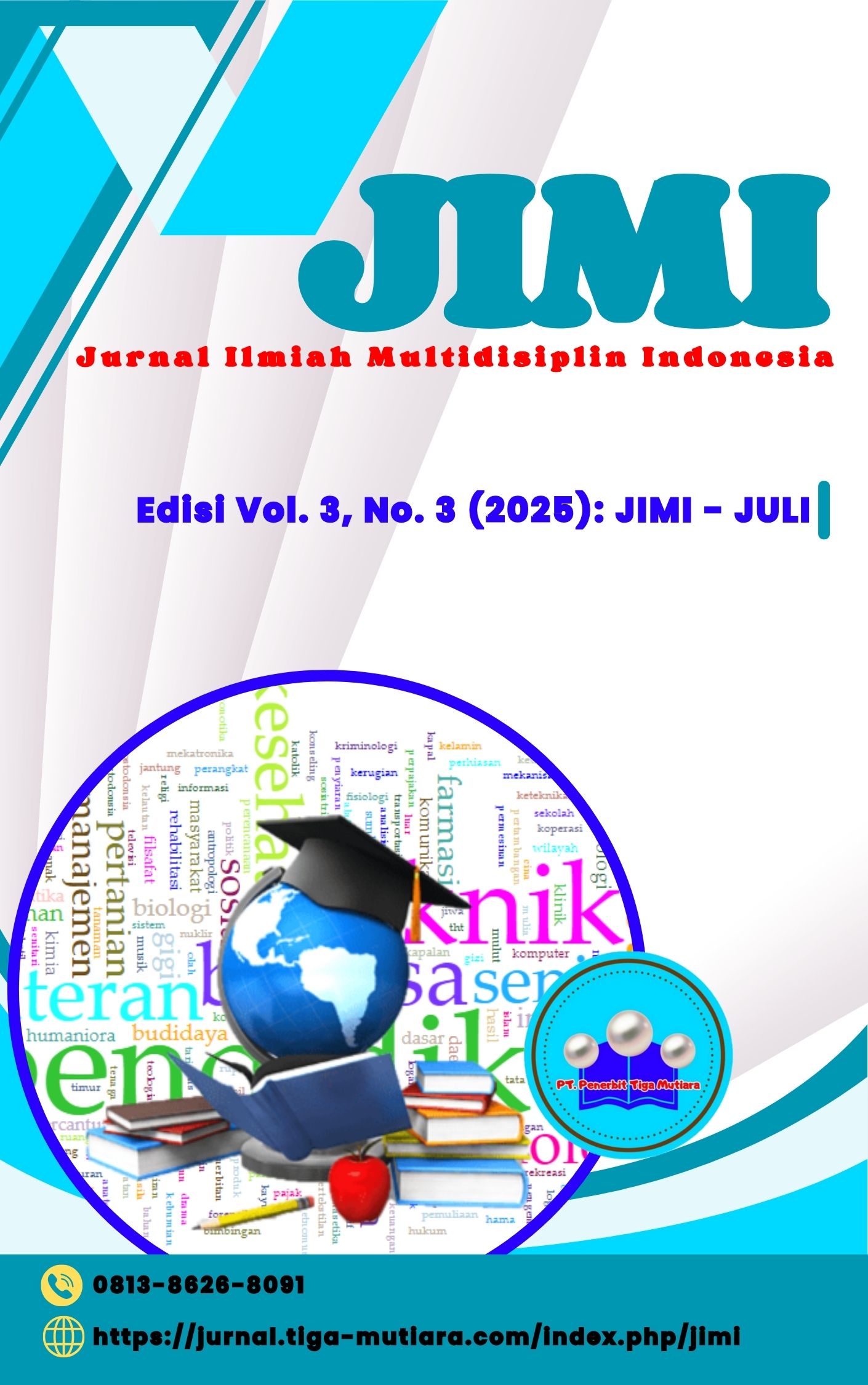The Subtextual Significances of Pragmatic Equivalence in Translating Humor
DOI:
https://doi.org/10.61404/mutiara.v3i3.390Keywords:
Coherence, Humor, Implicature, TranslationAbstract
This article examines the importance of pragmatic equivalence in translating humor, a crucial yet often challenging aspect due to humor’s deep reliance on cultural context, implicature, and audience interpretation. Pragmatic equivalence emphasizes the conveyance of implicit meaning through communication principles such as those proposed by Grice, where coherence takes precedence over mere lexical and grammatical cohesion. In humor translation, coherence refers to the interconnectedness of meaning based on shared context and knowledge between the author and the audience, rather than simply the structure of sentences. However, humor is inherently ambiguous and open to multiple interpretations, making its meaning not always directly transferable. A single mistranslated element can alter the entire comedic effect, as humor is often highly culture-specific. In this case, the translator’s role extends beyond language transfer to bridging the knowledge gap that the target audience might have, sometimes at the cost of the humor’s spontaneity. This challenge creates a dilemma between preserving natural comedic effect and delivering accurate meaning. As a result, humor translation often leans toward either overly literal or overly liberal approaches, each with the risk of losing essential nuance. Therefore, pragmatic equivalence involves more than just finding corresponding meanings; it also requires sensitivity to the social and cultural contexts that shape audience responses. The novelty of this study lies in its focus on the unique complexity of humor translation, making it a valuable contribution to the fields of literary studies, linguistics, and translation studies.
Downloads
References
Abualadas, Othman Ahmad. “Conversational Maxims in Fiction Translation: New Insights into Cooperation, Characterization, and Style.” Indonesian Journal of Applied Linguisticts 9, no. 3 (2020): 637–645. https://ejournal.upi.edu/index.php/IJAL/article/view/23214.
Baker, Mona. In Other Words: A Coursebook on Translation. New York: Routledge, 2018.
———. “Reframing Conflict in Translation.” Social Semiotics 17, no. 2 (2007): 151–169. https://www.tandfonline.com/doi/abs/10.1080/10350330701311454.
Bakhtiyorovna, Gafurova Gulrukh. “Equivalence and Pragmatic Aspects of Translation of Journalistic Texts.” European Journal of Literature and Linguistics 23, no. 1 (2023): 24–29. https://ppublishing.org/archive/publication/572-equivalence-and-pragmatic-aspects-of-translati.
Coticchia, Fabrizio, dan Andrea Catanzaro. “The Fog of Words: Assessing the Problematic Relationship between Strategic Narratives,(Master) Frames and Ideology.” Media, War and Conflict 15, no. 4 (2020): 427–449. https://journals.sagepub.com/doi/10.1177/1750635220965622.
Creswell, John Creswell and J. David. Research Design: Qualitative, Quantitative, and Mixed Methods Approaches. Edisi 4. Thousand Oaks: CA: SAGE Publications, 2014.
Davis, Jessica Milner, dan Jennifer Hofmann. “The Humor Transaction Schema: A Conceptual Framework for Researching the Nature and Effects of Humor.” Humor 36, no. 2 (2023): 323–353. https://www.degruyterbrill.com/document/doi/10.1515/humor-2020-0143/html.
Dobrovol’skij, Dmitrij, dan Elisabeth Piirainen. Figurative Language: Cross-Cultural and Cross-Linguistic Perspectives. Moscow: De Gruyter, Incorporated, 2023.
Fadillah, M Reza Ishadi, Rommel Utungga Pasopati, dan Devito Andharu. “Dampak Terpaan Konten Media Sosial Instagram terhadap Keterampilan Komunikasi Interpersonal Siswa SMK Unitomo Surabaya.” Kaganga Komunika 7, no. 1 (2025): 1–11. https://jurnal.uts.ac.id/index.php/KAGANGA/article/view/5686.
Firzatullah, Muchammad Daffa, Yoshua Veron Handika Putra Siadari, Luke Zefanezra Mulyanto, Kusuma Wijaya, dan Rommel Utungga Pasopati. “The Persistence of Modernity in Affecting Identities in Literature and Comic Studies.” In Proceeding International Conference on Religion, Science and Education, 4:1069–1077, 2025. https://sunankalijaga.org/prosiding/index.php/icrse/article/view/1542.
Heydon, Georgina, dan Sajjad Kianbakht. “Applying Cultural Linguistics to Translation Studies: A New Model for Humour Translation.” International Journal of Comparative Literature and Translation Studies 8, no. 3 (2020): 1–11. https://journals.aiac.org.au/index.php/IJCLTS/article/view/6311.
Hossain, Md. Mahroof. “The Application of Grice Maxims in Conversation: A Pragmatic Study.” Journal of English Language Teaching and Applied Linguistics 3, no. 10 (2021): 32–40. https://al-kindipublisher.com/index.php/jeltal/article/view/2166.
Krippendorff, Klaus. Content Analysis: An Introduction to Its Methodology. Los Angeles: SAGE Publications, 2018.
Kurniadi, Sepri. “A Gricean Maxim Analysis in Teaching and Learning Process at Higher Level Education.” Jurnal Inovasi Teknologi dan Rekayasa 6, no. 2 (2021): 112–118. https://inotera.poltas.ac.id/index.php/inotera/article/view/145.
Laila, Nur Azim. “Cooperative Principles in the 2019 Indonesian Presidential Debate: Grice’s Maxim Analysis.” Applied Linguistics Research Journal 2019, no. 4 (2019): 1. https://www.researchgate.net/publication/337418048_Cooperative_Principles_in_the_2019_Indonesian_Presidential_Debate_Grice’s_Maxim_Analysis.
Leacock, Stephen. Humor : its Theory and Technique, with Examples and Samples; a Book of Discovery. New York: Dodd, Mead, 2020.
Millenia, Putri Ayu, Nia Ayu Fitriani, Rindrah Kartiningsih, dan Rommel Utungga Pasopati. “The Implementation of Irony of The Old Man as Indicated on Luigi Pirandello’s War.” Jurnal Sosial Humaniora dan Pendidikan 2, no. 1 (2023): 29–35. https://journal.admi.or.id/index.php/JUSHPEN/article/view/561.
Moleong, Lexi J. Metodologi Penelitian Kualitatif. Bandung: Remaja Rosdakarya, 2002.
Nakhli, Habiba. “Pragmatic Aspects of Translation.” Journal of Pragmatics and Discourse Analysis 1, no. 1 (2022): 30–35. https://al-kindipublisher.com/index.php/jpds/article/view/4594.
Paronyan, Shushanik. “Pragmatic Equivalence in Literary Translation.” Translation Studies: Theory and Practice 2 (2024): 158–171. https://journals.ysu.am/index.php/transl-stud/article/view/11408.
Qin, Xiao, Pratomo Widodo, dan Sulis Triyono. “An Analysis of the Translation of Cultural Humor in the Novel ‘Huo Zhe.’” International Journal of Linguistics, Literature and Translation 2, no. 6 (2019): 185–192. https://www.neliti.com/publications/292455/an-analysis-of-the-translation-of-cultural-humor-in-the-novel-huo-zhe#cite.
Rubio-Fernandez, Paula. “Overinformative Speakers Are Cooperative: Revisiting the Gricean Maxim of Quantity.” Cognitive Science A Multidisiplinary Journal 43, no. 11 (2019): 1–21. https://onlinelibrary.wiley.com/doi/10.1111/cogs.12797.
Wisudawanto, Rahmat. “Kesepadanan Pragmatik dalam Penerjemahan Satire.” Pesona: Jurnal Kajian Bahasa dan Sastra Indonesia 7, no. 1 (2021): 38–48. https://ejournal.umpri.ac.id/index.php/pesona/article/view/1379.
Wulandari, Livia, Lina Fadiyah, Suhartawan Budianto, dan Rommel Pasopasti. “The Semiotic Analysis Meaning of Love in Last Night on Earth by Green Day.” Jurnal Adijaya Multidisplin 1, no. 1 (2023): 248–255. https://e-journal.naureendigition.com/index.php/jam/article/view/229.
Downloads
Published
How to Cite
Issue
Section
License
Copyright (c) 2025 Ni Nyoman Sarmi, *Rommel Utungga Pasopati, Dyah Ayu Ratna Jelita, Yoshua Veron Handika Putra Siadari, Agischa Putri Agil, Muhammad Daffa Firzatullah

This work is licensed under a Creative Commons Attribution-ShareAlike 4.0 International License.













